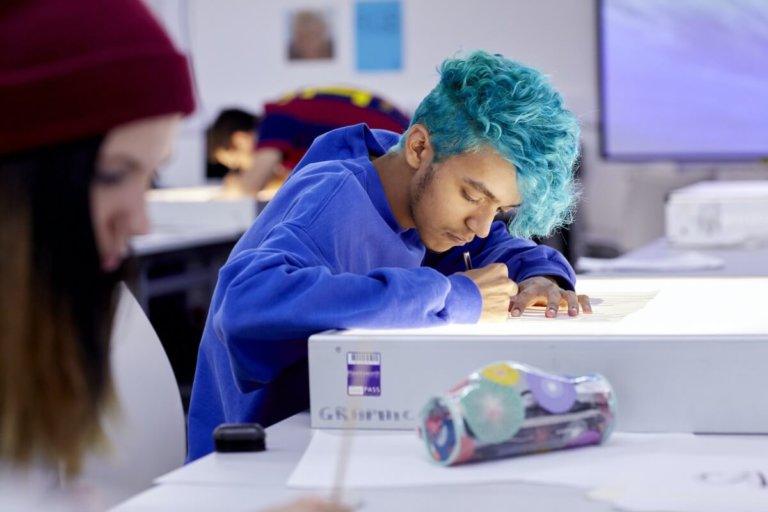
Despite the spotlight on coders and data analysts, the digital revolution will create an equally huge demand for arts graduates.
Ubiquitous high-speed mobile internet, artificial intelligence, widespread adoption of big data analytics and cloud technology have been identified as drivers driving business growth, according to the World Economic Forum’s Future of Jobs Report 2018. By 2022, the majority of companies said they will ramp up adoption of these technologies.
The effects of this are already underway, disrupting businesses and millions of jobs worldwide. But what is exciting are the new opportunities that will emerge from this massive shift, and it’s in this very space that arts graduates can capitalise on the shift.
What will become more obvious as technology advances is the role of art and creativity in a technology-dominated world. What defines the coming Fourth Industrial Revolution is not just technology, but the ever-evolving changes it brings with it.
This is where arts graduates and the specific skills they bring will prove valuable to companies and organisations everywhere. The “human” skills brought forth by the arts – such as creativity, critical thinking, problem solving, leadership and people management – are what we will need to ensure we develop science and technology in a human-centred way, reducing the skills gap faced by the next generation.
As the World Economic Forum notes: “…a premium will be placed on the need for ‘human’ skills to help us address new challenges and approach them in ways machines simply cannot. Ultimately, we need to harness technological advances in order to support a more creative response to some of the most complex issues facing the world today.”
Graduates from universities that combine cutting-edge facilities, technology and creative teaching produce arts graduates who will thrive in a wide range of fields in the digital revolution. The science backs this up; a recent Gallup report provided empirical evidence that employing creativity and transformative technology in classrooms significantly improves learning outcomes among young students. These skills include problem-solving, critical thinking, retention, making connections between different subjects and deep learning of the subject matter.
These four UK universities are leading the way, offering immersive learning techniques and state-of-the-art facilities to produce future-proof arts graduates:
COLLEGE OF ARTS, UNIVERSITY OF LINCOLN
Turning artistic capabilities into real world opportunities is the College of Arts at the University of Lincoln. Here, there’s no need to choose between following your passions or becoming an employable graduate. The innovative courses, cutting-edge facilities and strategic use of technology provide opportunities for students at this university, ranked 17th overall in the UK, to achieve these things and more.

University of Lincoln
Whether it’s in drama or film studies, undergraduates will benefit from the industry links and real world engagement embedded in its courses. This can include invaluable experiences such as attending masterclasses with some of the biggest names in the creative industries, such as the former Poet Laureate, Dame Carol Ann Duffy, and creative director and founder of Bartle Bogle Hegarty global advertising agency, Sir John Hegarty.
All of this takes place in an environment dedicated to enhancing learning, such as specialist design and TV studios, labs, workshops, newsrooms, and print and digital facilities.
When it comes to teaching, the College is well known for its innovative style, implementing exciting teaching methods and great employment outcomes, as demonstrated by its Gold award, the highest standard possible, in the national Teaching Excellence Framework (TEF) 2017. All this makes for a formula for success – ex-students are now in successful careers with reputed organisations – such as the BBC, ITV and Sky – as well as working on James Bond, Marvel and BAFTA-winning shows.
FACULTY OF ARTS AND HUMANITIES, UNIVERSITY OF SOUTHAMPTON
To study at the Faculty of Arts and Humanities at the University of Southampton is to study in a diverse, globally facing and locally connected centre of excellence for research, teaching, outreach and enterprise. It’s ranked 1st place in the UK for its music department, 3rd place in the UK for its film studies and 4th for philosophy disciplines in the 2020 Guardian Universities League Table, testament to the faculty as a creative and academic force to be reckoned with.
With a broad selection of progressive degrees, aspiring artists and thinkers can harness their passions and professional aspirations in the arts and humanities. There is no shortage of traditional and digital facilities to bring students’ ideas to life, such as large scale printers, a flat-bed printer, a laser cutter, a 3D printer, a T-shirt printer and a Mimaki wallpaper printer, in addition to industrial sewing machines, multi-thread overlockers for woven and knitted fabrics and large hand screenprinting tables.

university of Southampton
The school also provides high-quality workshops with specialist technical staff and a photo-media area for photography and video, a large editing workshop, a gallery to display students’ latest creations and a specialist library to aid students with their creative pursuits.
WESTMINSTER SCHOOL OF ARTS, UNIVERSITY OF WESTMINSTER
The Westminster School of Arts offers courses in the following subjects: Art and Design, Fashion, Film, Music and Photography.
Fashion students can expect an industry-driven course designed to meet the current and future needs of the international fashion industry. There are international internships available – voted the best in the world in the Business of Fashion Global Fashion School rankings – thanks to its exceptional industry connections and excellent track record of successful internships that have benefited students and fashion companies alike. Through such programmes, students gain an enormous amount of specific and transferable knowledge during this period of study. This explains in large part how Fashion Design graduates here have gone on to become Chief Creative Officer at Burberry or Artistic Director at Diane von Fürstenberg.
Similarly, in courses such as Art and Design, where visits to current exhibitions, projects and events are emphasised, students make full use of London’s exciting cultural and creative environment. Taught by active practitioners in a research-intensive environment, teaching here combines the development of professional level studio practice with the acquisition of skills, knowledge and understanding. The school offers multiple opportunities to work alongside students from film, animation, photography, music, fashion and journalism courses, making this university a hothouse for creative collaboration.

COLLEGE OF ART, UNIVERSITY OF EDINBURGH
Located in the historic Old Town of one of the world’s greatest cultural cities, Edinburgh College of Art (ECA) offers a creative and supportive environment in which to study one of 80 ground-breaking programmes. There are five schools at this global Top 50 institution: Edinburgh School Of Architecture And Landscape Architecture, School Of Art, School Of Design, History Of Art and Reid School Of Music.
ECA boasts an impressive range of facilities and resources: studios and workshops, libraries and collections, performance and exhibitions, services such as counselling and online learning resources. Students here gain access the Digital Film Editing Suite where they can learn industry-standard techniques, both the theoretical and creative side and the technical aspects of post-production work; or bring their ideas to life with the computer-aided design and computer-aided manufacturing (often abbreviated to CAD-CAM) facilities. These include 3D printers, 3D scanners, CNC routers, CAD embroidery machines and laser printers.
These facilities allow students to receive a mix of one-to-one tutorials, group critiques, seminars, lectures, and field trips. In addition to this, creative teaching methods here also include Friday Talks, guest workshops and external projects, where students stand to meet and be inspired by leading artists and thinkers from across, and beyond, ECA.
*Some of the institutions featured in this article are commercial partners of Study International
Liked this? Then you’ll love…
4 reasons to study Creative Arts and Design
Leading art schools combining creative education with experiential academics







